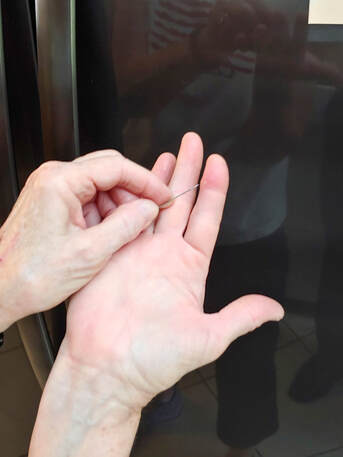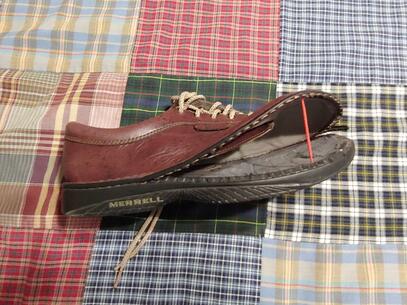|
Ash Wednesday falls on February 14 this year which, of course, is also Valentine's Day. My clergy friend, Larry Jacobson, shared in a FB post that since 1900, Valentine's day has fallen on Ash Wednesday only 4 times: 1923, 1934, 1945, and 2018. So this Ash Wednesday will be special in many ways. In response to my friend's post I pointed out that in the old Methodist Book of Worship, the "Service of Marriage," falls right in between the "Service for the Celebration of the Dead," and the "Service of Holy Communion." I have, for years, felt that that placement was symbolic of the fact that for a marriage to thrive, there must be a "dying to ourselves" and a consistent communion and fellowship with our Lord (hopefully on that part of both spouses). Perhaps the uniting of Ash Wednesday and Valentine's day is symbolic for us as well...
0 Comments
I recently got my 2002 Honda Odyssey back from the mechanic, there was a problem with the fan in the heating/air system and a part needed to be replaced. I was worried when I first took it in; the car has 328,000 miles on it and I feared the problem might not be repairable. But it was. I got the car back and it works fine. My hope is soon to buy a new car and give this one to my son (or someone else who needs it). The resale value is very low and I can give it to someone who can still use it for local travel. Many have told me that I am foolish for keeping my cars for so long, but for over 40 years this is a strategy that has worked for me. I see no reason to change my approach now...
I spent three days working to put up the Christmas lights so our family could share in our annual "turning on the of the lights" on Thanksgiving evening. I had tested all the lights before placing them in their appropriate places and I thought everything was "good to go." But on Thanksgiving morning I decided to do a final test and one whole section of lights failed to shine. I was frustrated and ready to throw away several strings of lights and purchase new ones. But then my son and family arrived and my son had a different perspective on the problem...
I recently "connected" with Debra Laaser on linkedin. In doing so I learned that she and her late husband, Mark, had worked together, for over thirty years, developing the Faithful and True ministries which provides services especially for those struggling with sexual addiction. (You can read more about their ministry at: www.faithfulandtrue.com.). Their services include: counseling, workshops, articles, podcasts, blog posts, and books. They have a wonderful team of professionals dedicated to assisting individuals and couples in their struggle with sexual addiction. I believe most are aware that the need for these kind of professional services is rapidly growing...
I greatly enjoyed our recent family trip to the aquarium. I've been there before but since we only go every two years or so I always find the exhibits to be extremely fascinating. As a "land dweller" and one who does not snorkel or scuba dive, it is easy for me to be generally unaware of what lies "under the surface" in the vast world we know as the ocean. Yet that is where so much of the life on our planet exists; generally unseen and in many ways ignored.
The human mind heart are a lot like this. We are all very aware of the thoughts that dwell (sometimes plague) our consciousness. Our behaviors can be seen by all; our words can be heard, our thoughts constantly clamor for our attention. But we all know that there is much more to "us" than what is seen or heard or even the thoughts of which we are aware. So much of who we are, in reality, lies below the surface.... Sam, my grandson, was so excited. About a year ago he developed an interest in archery and began "shooting" regularly at a local archery range. Recently he got his first bullseye. He had come close many times, but this time he hit the target right in the center. He didn't do this by closing his eyes and hoping; he did it by learning to take aim. It is a timely lesson as we consider, "What will we aim for, for 2020?"...
Recently my wife got a splinter in her hand. It was very small (difficult to see) and impossible for her to extract on her own. Still, this small object caused her some pain and great annoyance. She finally summoned my help to do some "surgery." Once we got it out she said, "I can't believe how much this small splinter has disrupted my day!" Her experience, however, confirms a principle that proves true in many areas of life.
My wife frequently asks me, "Why are you wearing your old shirt (tie, pants, shoes)? You have new ones. Your old clothes are sort of out of date; maybe it's time to try on the new." My usually response is, "I like my old clothes; there's nothing wrong with them. I can still get a lot of 'milage' out of them." Well sometimes I'm simply proved wrong...
One of my many interests is that of photography and one of the key principles of photography is to "protect your highlights." Now what does that mean? A highlight is usually the "brightest area of a photograph in which you can see detail." It is what gives the photo contrast and it is the portion of the photo that captures our attention. Recently I listened to photographer/philosopher Sean Tucker describe this theme of "protect your highlights" but he applied the principle to more than just photography; he said this principle also needs to be applied to life.
If you start at a point and walk 50 miles in one direction, obviously you will end up at another specific point. But if you start at the same beginning point and alter your direction even by one degree, 50 miles later you will be in an entirely different place. The lesson: small changes in direction over time take us to an entirely different ending.
Many people, especially as we begin a new year, plan to make huge changes in their life. Some of these include: a radically altered diet, an aggressive exercise program, accomplishing monumental new tasks, and possibly even the transformation of one's personality. The problem is, striving for big changes seldom works. But small changes, which are realistic and sustainable, can in time make a huge difference in the quality of our life. For 2018, what small changes can you make in: your attitude, your spiritual disciplines, your diet, your financial management, your exercise routine? A basic principle of Solution Focused Therapy is that small changes lead to big changes. So as you live into 2018 and consider the "life improvements" you want to take on; Think Small! By the end of the year you may be surprised at where life has taken you. |
AuthorDr. Allen Schneider is a United Methodist pastor and a Licensed Marriage and Family Therapist presently serving the Sapulpa and greater Tulsa communities. Archives
March 2024
Category
All
|










 RSS Feed
RSS Feed